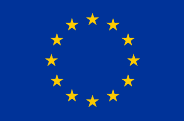
Safe non-food consumer Products in the EU and China
The main focus of this factsheet is the type of face masks which are used to protect or mitigate the virus transmission risk.
Face masks can fall into three main categories:
The most obvious risk with protective masks are that it does not offer the level of protection claimed or expected by the user, whose health may be affected because of reliance on the stated or expected level of protection. Some of these are listed below:
There are other common risks that can be applicable to all types of masks:
Specific examples of measures taken against dangerous face masks offered for sale in the European Union are available on the Safety Gate website. Type ‘face mask’ into the free text search box (but without the quotation marks). A better understanding of mistakes made in the safety assessment of face masks, or their manufacture can help avoid their repetition.
Legislation and guidance documents applicable specifically to masks intended to offer protection can be found on the European Commission website here.
Other legislation and guidance are available specifically in relation to those masks which are intended to reduce risk in a medical setting.
There are no specific legal requirements in relation to community face coverings other than that they are safe for the expected and foreseeable use taking into consideration the vulnerability of the user. Please note that every product must be safe for consumers, according to the General Product Safety Directive (GPSD) of the EU.
The conformity assessment of protective masks requires the intervention of a notified body that will issue an EU-type examination certificate after verifying that the design of the product meets the requirements of the PPE Regulation. Afterwards, during the production phase, the notified will either perform supervised product checks at random intervals or assess the quality system of the production process. In addition to this, the economic operator responsible for placing medical masks on the EU market may need to register with national authorities.
When protective masks are designed according to harmonised standards they shall be presumed to be in conformity with the essential health and safety requirements of the PPE Regulation, which will facilitate the conformity assessment process.
The production control can be based on random product checks at supervised intervals, quality assurance of the production process or product, unit verification, or full quality assurance.
A list of EU notified bodies for protective masks can be found on the NANDO website.
Conformity assessment of medical masks does not require the intervention of a notified body, unless these devices are placed on the market in sterile condition. Relevant harmonised standards are also available.
While manufacturer’s need to familiarise themselves with all the laws which apply to their specific products, the following summarises some further key applicable laws:
“Harmonised standards” exist in the EU for protective and medical masks. Masks which are correctly classified and complying with these standards are presumed to be in conformity with the relevant essential safety requirements if the standards are referenced in the Official Journal of the European Union (OJEU).
Note: The full text of European standards can only be purchased from a national standardisation body. The following site of CEN (the European standardisation organisation) provides links to the national standardisations bodies’ websites. In addition, the China Standards Information Services Network can be used to access European standards.
Different masks are used for different applications and to protect against a wide range of hazards. The manufacturer must be clear about the hazards against which the mask is intended to protect and also the level of protection offered. A full list of the harmonised standards in support of Regulation (EU) 2016/425 is available here
A search in the xls file using the term ‘mask’ will provide all of the relevant harmonised standards which provide a presumption of conformity.
Masks which are medical devices:
A full list of the harmonised standards in support of Regulation (EU) 2017/745 is available here.
Masks which are community face coverings:
There is no harmonised standard for these products, but CEN, the relevant European standardisation body, offers guidance on testing here.
However, the standard series covers other safety issues and manufacturers are strongly advised to consult all parts. It is important to note that the latest edition of the standard referenced in the OJEU (including any amendments) should be applied.
The following are obligatory and should be placed on the product or where permitted on the packaging:
To ensure safety of face masks, there is also a range of general requirements to be fulfilled. These are explained in the following factsheets and need to be read in conjunction with this factsheet:
You may also visit the SPEAC ACADEMY to learn more about the EU Safety requirements.
The provided information was updated in 2022. Please note that some of the provided information could change during possible subsequent revisions of legislation, standards, and guidance documents. For any updates of official information on the EU product safety rules, please follow the Link to the webpage of the European Commission.
This document was produced with the financial support of the European Union. Its contents are the sole responsibility of SPEAC project and do not necessarily reflect the views of the European Union.

This website was created and maintained with the financial support of the European Union. Its contents are the sole responsibility of SPEAC project and do not necessarily reflect the views of the European Union.